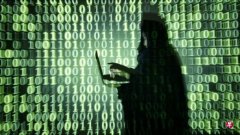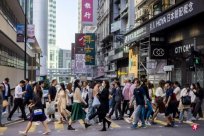It was heard from electric vehicles such as flooding, low temperature, fire, and faults during driving. Last year, more than 20,000 fire accidents caused by electric bicycles in China alone, and the severe cold weather just passed in the past also passed.Test the performance of electric vehicles.Apple has just announced the cancellation of ICAR development projects that have been prepared for 10 years, and switch to resources to artificial intelligence technology and expand reality technology.In fact, in recent years, there have been two consecutive car companies to withdraw from electric vehicles. For example, GM's electric vehicles have discontinued production last year.
The European Union will tax on the import of Chinese electric vehicles, and US President Bynden ordered the security risks brought by investigating smart networking cars produced in China.Based on the above news, for a while, it seemed to bring new uncertainty to the electric vehicle industry.However, Xiaomi, Chinese companies, still released the latest electric vehicles, and Thai electric vehicles are also optimistic about the market.I think that maybe more and more importantly, what kind of future transportation do we want more and more importantly than the interest and decline of electric vehicles of individual countries or enterprises. What are the best choices outside of electric vehicles?
What is the future?Author John Urry is the late British sociologist. He calls on social science to re -study the future and use civic society, government and complex systemic thinking to establish social future learning and creating social future.Eri pointed out that the automobile system matured in the 20th century, especially in 1901 to discover the state oil fields, but the establishment of a "car entrusted" failed.Eri pointed out that in the automotive era, the time to commute overly waste community exchange time, occupy urban space, deprive the rights of pedestrians, cause death of millions of people each year, nitrogen dioxide pollution, petroleum economy and climate change.System possibilities in 2050, such as fast -moving cities using hydrogen energy.
The two American authors of the mobile revolution book are John Rossant, founder of the New City Foundation, and former Bloomberg Business Weekly reporter Stephen Baker.Digitalized, the third stage of smartphones in the 21st century, the third stage is to gradually run around by technology with technology.They believe that the price of human movement will become cheaper and cheaper, just like computer hardware.Moving software will become more and more promising. For example, Herbinky's Maas Global may be extended to the world like Nokia (Nokia) from Finland.
The mobile revolution takes Los Angeles, California, USA as an example. The total parking lot in the city is five times that of the Paris parking lot, about 200 square kilometers, which is one -third of Singapore's total area.The problem in Los Angeles is the highway culture formed after World War II, causing too many cars, highways and parking lots in the city, and these facilities can be converted into more meaningful uses.This reminds me of the tragedy of American basketball star Kobe Brene. He took a helicopter because he wanted to avoid traffic jams and pursue faster movement methods, but died with his daughter because of an accident.
The book mobile revolution also mentioned that the average life of the car is 11 years, so "the goal of Los Angeles is not to eliminate cars, but to end a single culture dominated by cars, giving people more choices."Multiple choices such as foot lanes and subways make travel more diverse and environmentally friendly.
In conjunction with the views of the two books, when the climate becomes warmer, changing energy, logistics and policy tools can provide better traffic countermeasures.The former point out the planning, pollution, warming, and casualties caused by the car era, while the latter further proposed that the selection of transportation tools is used as an economic engine that stimulates changes, and it is more likely to change people's travel models, residence locations, and even urban landscapes.
The author is a doctoral student at the Department of Sociology, Nanyang University of Technology




